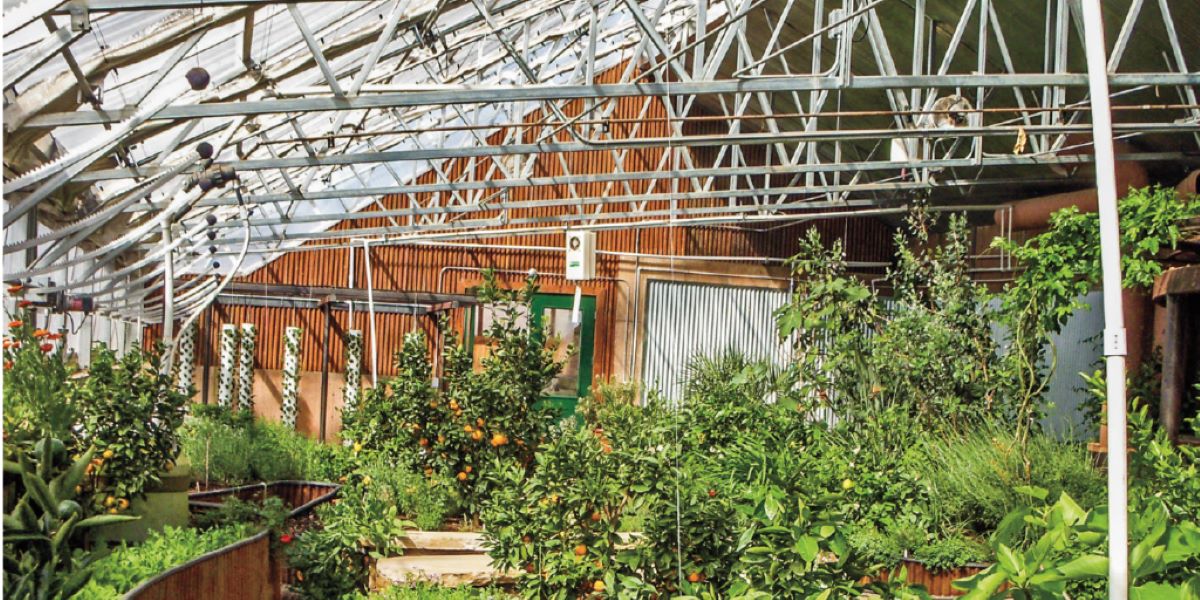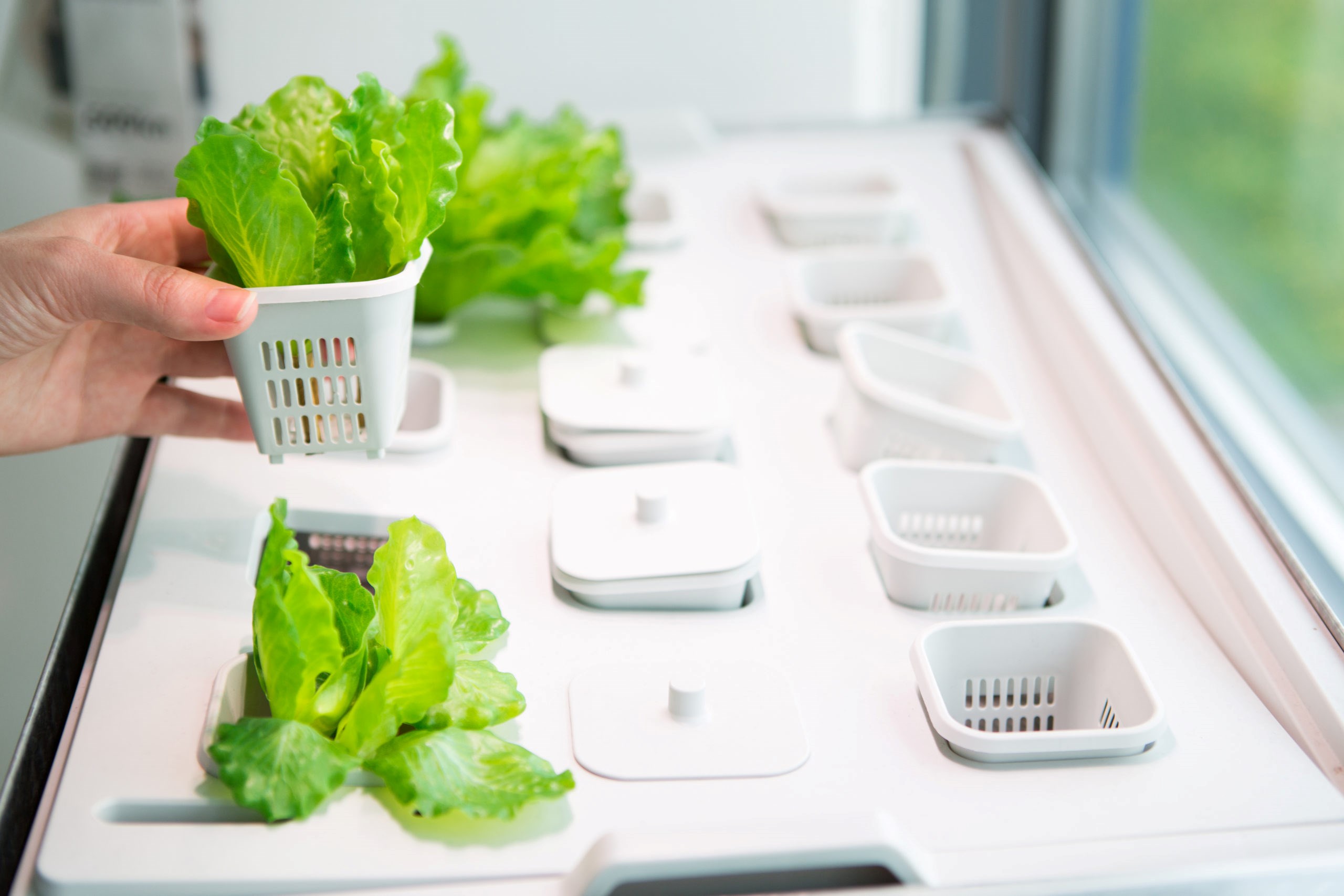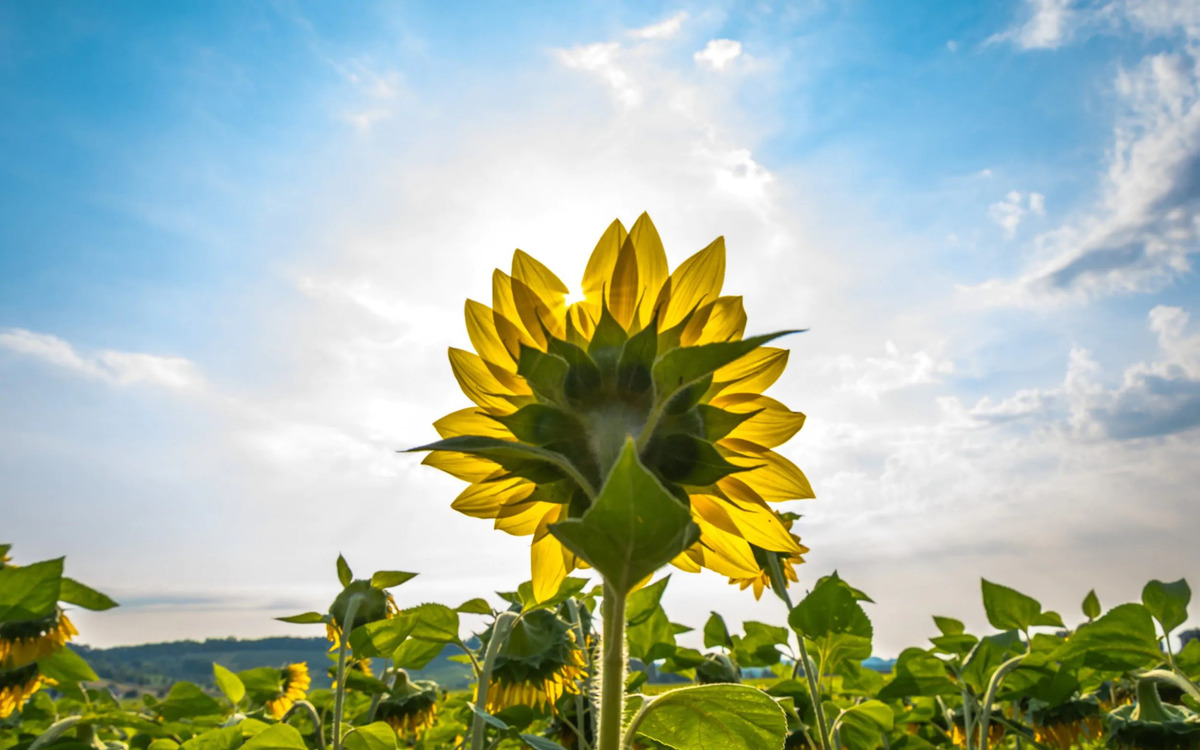Home>Gardening Techniques>Plant Care>What Herbs Need Full Sun


Plant Care
What Herbs Need Full Sun
Modified: January 22, 2024
Learn about the essential plant care tips for herbs that thrive in full sun. Discover how to provide the perfect conditions for your sun-loving herbs to grow and thrive.
(Many of the links in this article redirect to a specific reviewed product. Your purchase of these products through affiliate links helps to generate commission for Chicagolandgardening.com, at no extra cost. Learn more)
Table of Contents
Introduction
When it comes to growing herbs, providing them with the right amount of sunlight is crucial for their health and vitality. While some herbs can tolerate partial shade, many of them thrive in full sunlight. Understanding the importance of full sun exposure and how it affects the growth and development of herbs is essential for successful herb gardening.
The sun is not only a source of light but also a vital energy source for plants. It plays a vital role in photosynthesis, the process by which plants convert sunlight into energy, allowing them to grow and produce food. Herbs, with their aromatic leaves and flavorful profiles, require an ample amount of sunlight to thrive.
Full sunlight refers to at least six hours of direct sunlight per day. It is preferred for most herbs as it provides the optimal conditions for their growth. When herbs receive the right amount of sunlight, they develop strong stems, vibrant foliage, and robust flavors. In addition, sunlight helps in the production of essential oils, which are responsible for the distinct aroma and taste of herbs.
So, whether you’re an experienced gardener or just starting out, understanding the importance of full sun for herbs is key to ensuring a bountiful harvest and robust growth. In the following sections, we will explore the factors to consider when providing full sunlight for herbs, popular herbs that thrive in full sun, and tips for caring for herbs in full sunlight to help you enhance your herb garden.
Importance of Full Sunlight for Herbs
Full sunlight plays a crucial role in the growth and development of herbs. Here are a few reasons why providing herbs with full sun exposure is important:
- Optimal Growth: Herbs that receive the recommended amount of sunlight experience optimal growth and development. Sunlight provides the energy needed for photosynthesis, allowing plants to produce their own food. This, in turn, leads to healthier and more vigorous herb plants.
- Enhanced Flavor and Aroma: Sunlight stimulates the production of essential oils in herbs, which are responsible for their distinct flavors and aromas. Herbs grown in full sun tend to have more pronounced and robust flavors compared to those grown in shady areas.
- Increased Nutritional Value: Sunlight helps herbs produce more vitamins and antioxidants, leading to higher nutritional value. Consuming herbs grown in full sun ensures you get the maximum benefits from their phytonutrients.
- Stronger Roots and Stems: Sunlight provides the necessary energy for the development of strong and sturdy roots and stems in herbs. This gives plants a firm foundation, making them more resistant to diseases, pests, and harsh weather conditions.
- Higher Yields: When herbs receive ample sunlight, they are more likely to produce abundant harvests. This is because sunlight promotes flower and fruit production, resulting in a higher yield of herbs for culinary use or medicinal purposes.
It is important to note that while some herbs can tolerate partial shade, others, such as basil, oregano, and rosemary, thrive in full sun. By providing herbs with the right amount of sunlight, you are creating the ideal growing conditions for them, leading to healthier, more flavorful, and more productive herb plants.
Factors to Consider for Full Sunlight
While full sun is beneficial for herbs, certain factors need to be considered to ensure they receive optimal sunlight. These factors include:
- Sun Exposure: Determine the amount of sunlight your garden or growing space receives throughout the day. Herbs typically require at least six hours of direct sunlight, so choose a location that receives adequate sun exposure.
- Orientation: Consider the orientation of your garden beds or containers. South-facing areas usually receive the most sunlight during the day, while north-facing areas may be more shaded. Arrange your herbs accordingly to maximize sun exposure.
- Shade Patterns: Observe the shading patterns in your garden. Nearby structures, trees, or tall plants can cast shadows that may reduce the hours of direct sunlight received by your herbs. Avoid planting herbs in shaded areas.
- Microclimates: Different areas within your garden may have varying microclimates, which can impact sunlight availability. For example, areas next to walls or near reflective surfaces may receive more intense sunlight, while areas under trees may have dappled shade. Understand these microclimates to select the right herbs and their positioning.
- Seasonal Changes: Keep in mind that the angle and intensity of sunlight change with the seasons. Monitor how the sun moves across your garden throughout the year and adjust your herb garden accordingly. Consider using movable containers to optimize sun exposure in different seasons.
By considering these factors, you can ensure that your herbs receive the required amount of sunlight for optimal growth. Take the time to assess your garden’s sun exposure and make any necessary adjustments to create the ideal conditions for your herbs.
Popular Herbs That Need Full Sun
While many herbs can tolerate partial shade, there are several popular herbs that thrive best in full sun. Here are some examples:
- Basil: Basil is a popular herb known for its aromatic leaves and versatile culinary uses. It requires full sun to develop its delicious flavor and grow into a lush and bushy plant. Place basil in a sunny spot to ensure robust growth.
- Rosemary: Rosemary is a woody herb with fragrant needle-like leaves. It thrives in full sun and well-drained soil. This herb not only adds a delightful flavor to dishes but also attracts bees and butterflies with its tiny flowers.
- Thyme: Thyme is a low-growing herb with tiny leaves and a strong aroma. It prefers full sun and well-drained soil. Thyme thrives in sunny spots and can be used in a variety of dishes, from stews and soups to marinades and roasted vegetables.
- Oregano: Oregano is a flavorful herb commonly used in Mediterranean cuisine. It requires full sun and well-drained soil to thrive. Oregano is a great addition to pizza sauces, pasta dishes, and marinades, and it can also be used fresh or dried.
- Parsley: Parsley is an herb known for its vibrant green leaves and refreshing flavor. It performs best in full sun, although it can tolerate some shade. Parsley adds freshness to salads, soups, and sauces, and is also a popular garnish.
These are just a few examples of herbs that flourish in full sunlight. Keep in mind that each herb has unique sunlight requirements, so it’s important to research the specific needs of any herbs you plan to grow. By providing them with the right amount of sunlight, you’ll be rewarded with healthy, robust, and flavorful herb plants.
Care and Maintenance Tips for Herbs in Full Sunlight
Proper care and maintenance are essential for the health and productivity of herbs grown in full sunlight. To ensure your herbs thrive, consider these tips:
- Watering: Herbs in full sun generally require more frequent watering. Check the moisture level of the soil regularly, and water when the top inch feels dry. Avoid over-watering, as it can lead to root rot. Provide deep and thorough watering to encourage strong root growth.
- Soil Quality: Ensure your herbs are planted in well-draining soil to prevent waterlogging. Amending the soil with compost or organic matter can improve drainage and provide essential nutrients for healthy growth.
- Mulching: Apply a layer of organic mulch, such as straw or wood chips, around the base of your herb plants. Mulching helps retain soil moisture, regulates temperature, and suppresses weeds. Avoid placing mulch directly against the herb stems to prevent rotting.
- Pruning: Regularly prune your herbs to maintain their shape, encourage bushier growth, and prevent them from becoming leggy. Harvesting leaves from the top of the plant also promotes new growth. Pruning should be done in the morning to avoid stressing the plants during the heat of the day.
- Fertilizing: Herbs grown in full sun benefit from regular feeding. Choose a balanced organic fertilizer, and apply it according to the manufacturer’s instructions. Over-fertilization can lead to excessive foliage growth at the expense of essential oils, so it’s important to use fertilizer sparingly.
- Pest Control: Monitor your herbs for pest infestations, as pests can quickly damage their tender leaves. Keep an eye out for common herb pests like aphids, spider mites, and caterpillars. Use organic pest control methods, such as neem oil or insecticidal soap, to treat infestations.
- Harvesting: Regularly harvest leaves from your herbs to promote continuous growth and prevent them from becoming woody. Harvesting in the morning when the essential oils are most concentrated yields the best flavor and aroma.
- Winter Protection: In colder climates, protect your herbs during winter by covering them with a layer of mulch or bringing potted herbs indoors. This will help prevent frost damage and ensure their survival for the next growing season.
By following these care and maintenance tips, you can ensure that your herbs in full sunlight remain healthy, productive, and flavorful. Remember to observe your plants closely and make adjustments to their care as needed.
Common Pitfalls to Avoid when Growing Herbs in Full Sun
While growing herbs in full sunlight can be rewarding, there are some common pitfalls you should be aware of. By avoiding these mistakes, you can ensure the success of your herb garden:
- Overwatering: One of the most common mistakes is overwatering herbs. While they need regular watering, overwatering can lead to root rot and other fungal diseases. Make sure to water herbs when the top inch of soil feels dry and ensure proper drainage.
- Underwatering: On the other hand, underwatering herbs can cause them to become stressed and wilt. Monitor the moisture level of the soil and provide sufficient water, especially during hot and dry periods.
- Poor Soil Quality: Herbs grown in full sun thrive in well-drained soil. Avoid planting herbs in heavy clay or compacted soil, as it can hinder root growth. Improve soil quality by amending it with organic matter to ensure proper drainage and nutrient availability.
- Planting Too Close: It’s important to give herbs enough space to grow. Planting them too close together can lead to overcrowding, which increases the risk of pests and diseases. Follow the recommended spacing guidelines for each herb to allow proper air circulation and sunlight exposure.
- Not Pruning: Failure to prune herbs regularly can result in weak, scraggly plants. Pruning helps promote bushier growth and prevents herbs from becoming leggy. Harvesting leaves also encourages continuous growth and ensures the development of robust flavors.
- Using Chemical Pesticides: Avoid the use of chemical pesticides on your herbs, as they can harm beneficial insects and contaminate the herbs themselves. Instead, use organic pest control methods and encourage natural predators to manage pest populations.
- Underestimating Herb Size: Some herbs, like mint and lemon balm, are vigorous growers and can quickly take over a garden bed if not properly contained. Be aware of the growth habits and spread of each herb, and consider planting invasive herbs in containers.
- Not Rotating Crops: Planting the same herbs in the same location year after year can deplete the soil of nutrients and increase the risk of diseases. Practice crop rotation by moving herbs to different spots in your garden each year to maintain soil health.
By avoiding these common pitfalls, you can ensure the health, productivity, and longevity of your herbs in full sunlight. Stay vigilant and address any issues promptly to create a thriving herb garden.
Conclusion
Growing herbs in full sunlight can be a rewarding experience that provides you with a bountiful harvest of flavorful and aromatic plants. By understanding the importance of full sun exposure for herbs and considering the various factors involved, you can create the optimal conditions for their growth.
Providing herbs with at least six hours of direct sunlight per day allows them to thrive and develop their vibrant flavors, robust aromas, and strong stems. It also enhances their nutritional value, making your culinary creations even more delightful.
Remember to choose herbs that are well-suited for full sun and consider the specific requirements of each variety. Basil, rosemary, thyme, oregano, and parsley are just a few examples of popular herbs that flourish in full sunlight.
Proper care and maintenance are crucial for the health of your herbs. Adequate watering, well-drained soil, regular pruning, and mindful pest control are all key aspects to keep in mind when caring for herbs in full sunlight. Avoid common pitfalls such as overwatering, poor soil quality, and neglecting to prune. By doing so, you can ensure the long-term success of your herb garden.
In conclusion, growing herbs in full sunlight is a rewarding and fulfilling endeavor. With the right knowledge, attention to detail, and care, you can enjoy a flourishing herb garden filled with vibrant, aromatic, and delicious plants.






